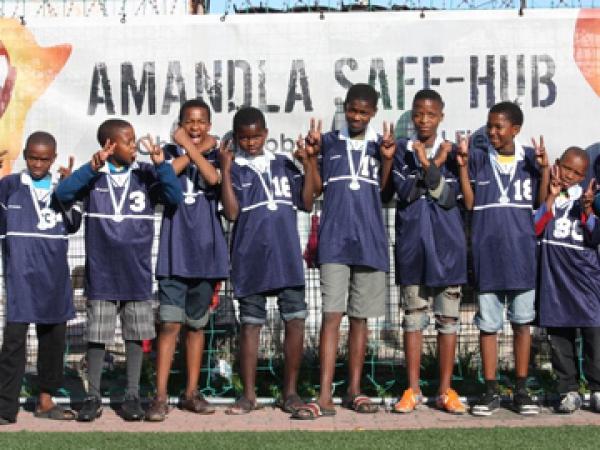Can sport help reduce city’s violence?

Gang members and competitive sportsmen may share a “warrior gene”, according to Don Pinnock of the Usiko Trust.
Pinnock has studied gangsters for more than 30 years.
Speaking at a roundtable on sport and the prevention of violence in Rondebosch on Wednesday organised by the Safety and Violence Initiative (SaVI) at the University of Cape Town (UCT), he said some people were born with the warrior gene.
“Building a baby is a chemical process. Sixteen percent of mothers in the Western Cape are malnourished, which means their babies are likely to have deficiencies in iron, calcium and vitamins. There is also high alcohol and drug use.
“These kids can be born with dopamine/serotonin deficiencies,” he said.
They would have lower resistance to disease, a lower concentration span and a higher potential for later violence and drug use.
“The so-called warrior gene predominates in stress situations. This is bad news if you are in a gang, but could be an advantage in competitive sport if the situation is understood,” said Pinnock.
Sport was a positive and constructive way for gang members to express themselves, he said.
EDITOR’S NOTE: Some scientists have postulated that a particular form of the Monoamine oxidase A gene predicts higher levels of aggression. It has therefore been called the “warrior gene”. But the theory is controversial and to date there is only a little evidence to support it.
The focus of the conference was the influence of sport in preventing violent behaviour, mainly among the youth.
David Abrahams from the provincial department of Social Development said studies showed no evidence that sport prevented violence. But sport did have a positive influence on the development of a person, he said.
Abrahams said sports alone could not eliminate violence. He gave the example of young people playing sports for a few hours during the day and later going out and committing crimes.
Bridget Hannah from the Premier’s office said parents had a huge role to play in the development stages of children. Sport had a positive influence but only up to a point. “The background and the upbringing of the child might influence the kind of person they will be at the later stage”.
Delegates from organisations including Amandla Edufootball, Safety Lab, Nebula, Waves for Change, Usiko Trust and Sonke Gender Justice, in Nyanga, Gugulethu and Khayelitsha attended the conference as well as officials from the Ministry of Social Development, the Premier’s office and the Department of Community Safety.
Representatives from each organisation had to present the work their organisation does and how they play a role in preventing violence in the townships.
Tim Conibear from Wave of Change said his organisation taught learners from schools in Khayelitsha how to surf at Monwabisi beach. Some were learners who caused trouble at school and some were members of gangs.
“For young black people being able to surf is breaking the notion that surfing is for white people only. And also some of the people we work with believe being able to play at sea culturally connects them to their ancestors.”
Participants from Safety Lab said that their organisation offered young people from Nyanga a space for extra mural activities to keep them off the street.
Lerato Kosi from Usiko Trust in Khayelitsha explained that his organisation took young gang members into the wilderness to play sporting games where they could fight each other and reflect on what they were doing.
Nebula in Gugulethu teaches primary school learners how to skateboard. Rayne Moses said that as well as being fun, skateboarding taught young people that in life you fall but you have to get up again and try. The organization also helped learners with their school work, he said.
Closing the discussion, Guy Lamb from SaVi said people should talk openly about the causes of violence and try to find ways to help eliminate violent behaviours. Participation in sport was not the only solution, he said, but could help in reducing violent behaviour.
A correction was made to this article. The original article attributed a quote incorrectly to Don Pinnock. It has been removed.
Support independent journalism
Donate using Payfast

Don't miss out on the latest news
We respect your privacy, and promise we won't spam you.

This article is licensed under a Creative Commons Attribution-NoDerivatives 4.0 International License.
